Marblehead Lighthouse


Lifesaving Station
Marblehead Lighthouse

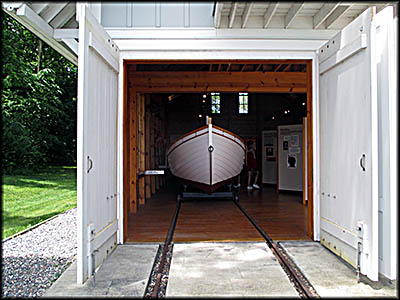
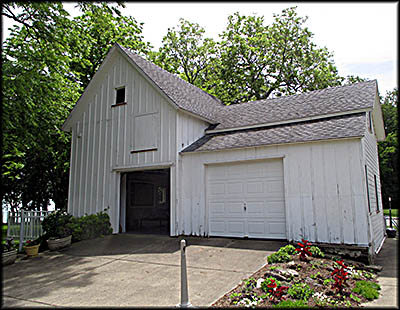
Carriage House
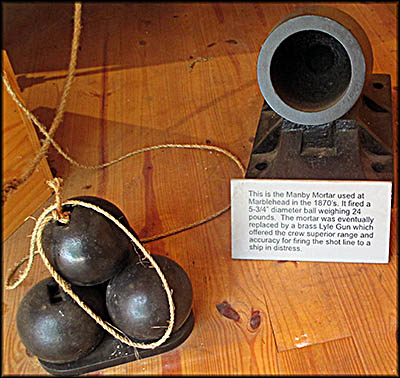
Manby Mortar
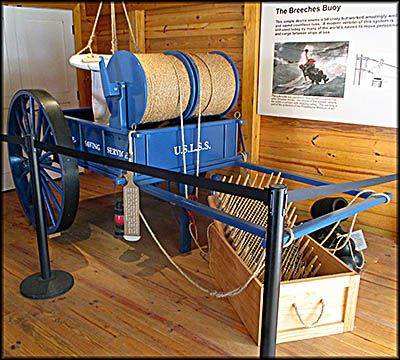
Land-Based Breeches Buoy
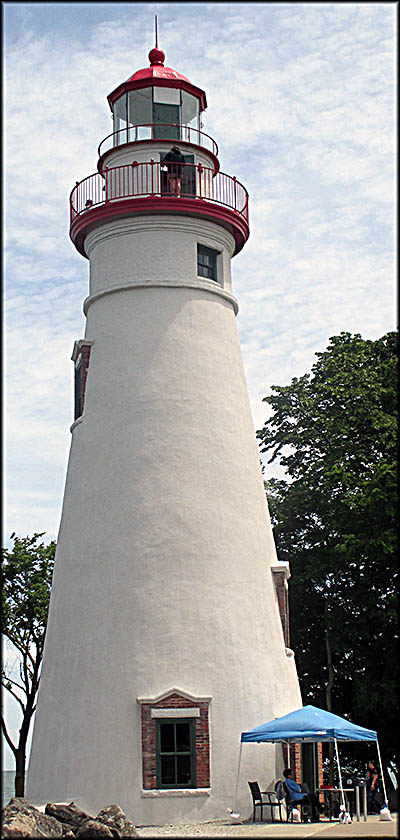
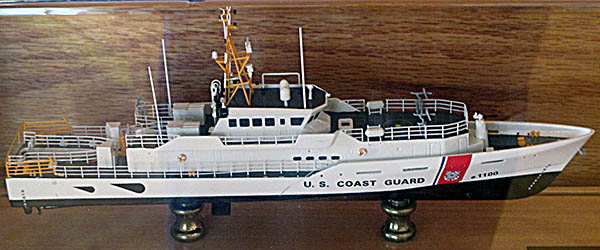
This is a model of the Winslow Griesser, a U.S. Coast Guard cutter named after Winslow Griesser. He worked for the U.S. Lifesaving Service for thirty-nine years, served as mayor of Marblehead, and earned the Gold Life Saving medal from Congress for a daring rescue out of Buffalo, New York, in November 1921.
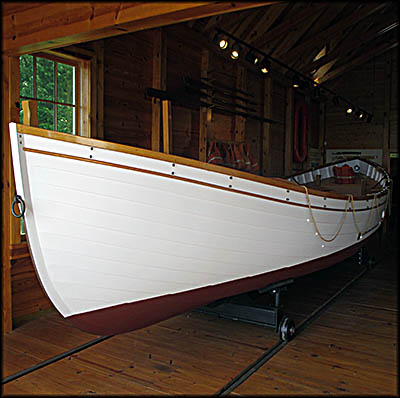
Restored 1931 Coast Guard SB (Type S) Boat

Winslow Homer's 1884 painting The Life Line shows a breeches buoy in action.
Wikimedia Commons
Wikimedia Commons
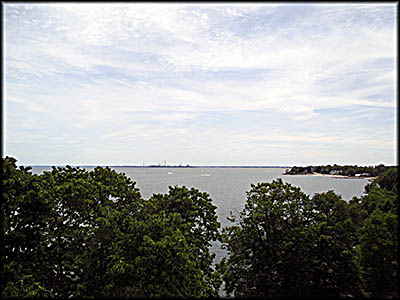
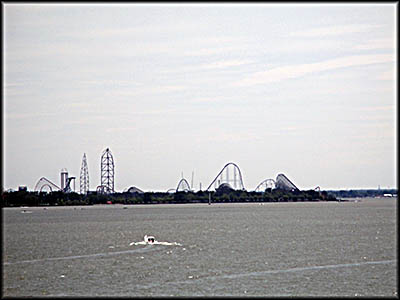
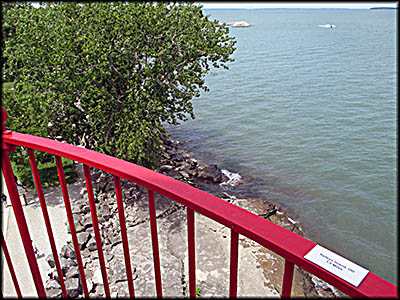
Views from the Top the Lighthouse
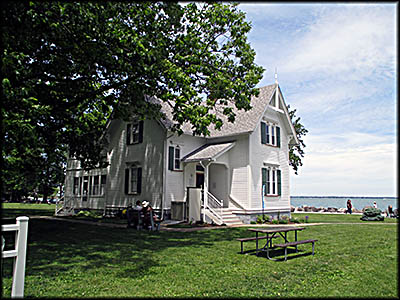
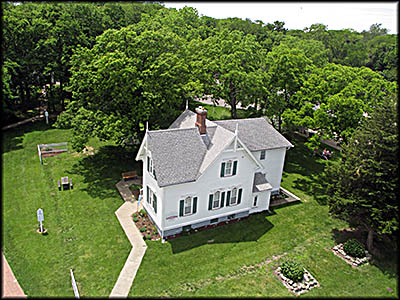
Keeper's House

The 3.5. order Frensel lens was used at Marblehead Lighthouse from 1898 to 1972.
During the 1970s and 1980s, my family periodically visited Marblehead Lighthouse on Ohio’s Marblehead peninsula. It was shut up tight, as were the nearby the lighthouse keeper’s and carriage houses. The lighthouse was opened to the public maybe once a year and I never had a chance to go inside. You could also go swimming here, which my brother and I once did. He nearly drowned. Swimming is now forbidden.
The lighthouse is open to the public from Memorial Day to Labor Day, and the keeper’s house was made into a museum. Until recently I wasn’t aware of this, so I decided to visit. I haven’t been there since the mid-1990s. To my surprise, there is an expanded parking lot, a modern restroom building, the carriage house is open, and someone built a replica of the lifesaving station once on the premises.
The original U.S. Lifesaving Station was built here in 1876. Its watchtower and cart room were added in the 1880s. Torn down in 1921, its replacement was demolished in 1982. The current lifesaving station is about a mile and a half from the museum site. The museum’s replica lifesaving station is based on the 1876 version, but it lacks the upper floor that served as the crew’s quarters. Within the station is a restored 1931 Coast Guard SB (Type S) lifesaving surf boat. Originally used by the Coast Guard in Chicago on Lake Michigan, it made its way to Catawba Island (about five and a half miles from the lighthouse as the crow flies) where it fell into “total disrepair” (says an information sign). It took seven years to restore it.
In the late eighteenth and early nineteenth centuries, the U.S. government had a policy of not regulating maritime affairs for fear of stifling its growth. A series of shipwrecks near the shore on the U.S. Eastern Seaboard led to calls for the creation of a service that would give aid to distressed vessels. The first federal funds to build lifesaving stations went to locations in New Jersey and Massachusetts and were run by the U.S. Revenue Cutter Service. This organization combined with the U.S. Lifesaving Service in 1915 to become the U.S. Coast Guard. In 1939 the Coast Guard began running all American lighthouses.
The U.S. Treasury Department funded more lifesaving stations starting in 1874. In 1876 six were built in Ohio along Lake Erie’s southern shore, a place where they are greatly needed it. Of all the Great Lakes, Erie is by far the most dangerous because its shallowness allows storms to whip up violent seas.
Life saving stations were equipped with a variety of tools to effect rescue. Many of these were modified military weapons. The Manby mortar, as an example, was used to fire a line to vessels in distress. While the Manby saved many lives, it wasn’t as reliable as one would hope, so in 1877 David A. Lyle designed an updated version based on a cannon which became known as the Lyle gun.
The original U.S. Lifesaving Station was built here in 1876. Its watchtower and cart room were added in the 1880s. Torn down in 1921, its replacement was demolished in 1982. The current lifesaving station is about a mile and a half from the museum site. The museum’s replica lifesaving station is based on the 1876 version, but it lacks the upper floor that served as the crew’s quarters. Within the station is a restored 1931 Coast Guard SB (Type S) lifesaving surf boat. Originally used by the Coast Guard in Chicago on Lake Michigan, it made its way to Catawba Island (about five and a half miles from the lighthouse as the crow flies) where it fell into “total disrepair” (says an information sign). It took seven years to restore it.
In the late eighteenth and early nineteenth centuries, the U.S. government had a policy of not regulating maritime affairs for fear of stifling its growth. A series of shipwrecks near the shore on the U.S. Eastern Seaboard led to calls for the creation of a service that would give aid to distressed vessels. The first federal funds to build lifesaving stations went to locations in New Jersey and Massachusetts and were run by the U.S. Revenue Cutter Service. This organization combined with the U.S. Lifesaving Service in 1915 to become the U.S. Coast Guard. In 1939 the Coast Guard began running all American lighthouses.
The U.S. Treasury Department funded more lifesaving stations starting in 1874. In 1876 six were built in Ohio along Lake Erie’s southern shore, a place where they are greatly needed it. Of all the Great Lakes, Erie is by far the most dangerous because its shallowness allows storms to whip up violent seas.
Life saving stations were equipped with a variety of tools to effect rescue. Many of these were modified military weapons. The Manby mortar, as an example, was used to fire a line to vessels in distress. While the Manby saved many lives, it wasn’t as reliable as one would hope, so in 1877 David A. Lyle designed an updated version based on a cannon which became known as the Lyle gun.
A variation of this found at the museum is a modified Sharpe Model 1863 percussion carbine with its bore smoothed out so it can fire a line to another vessel. The museum has it mislabeled as a Lyle gun. These were cannons, not handheld firearms. Another lifesaving device was the breeches buoy. It worked like this. A line was sent to a distressed boat or ship, then a pulley was attached to carry what looked like an empty pair of breeches that zipped from one vessel to another. A person got into the breeches during the trip.
To attract help from the lifesaving station, a vessel in trouble could fire flares of white, red and green. A code existed she vessel could fire them in specific sequences to tell others what the trouble was. The first successful flare system was invented by Martha Coston, a young widow with four children. Her deceased husband outlined the idea, but she made it practical by basing her product on pyrotechnics. Her flares were simple to use and durable enough to work in the harshest sea conditions. She started a company to manufacture them in 1859. The U.S. Navy used them exclusively, and they were the only ones recognized by the British Board of Trade.
Lifesaving station crews were well-disciplined and trained. Weekly drills included practicing the firing of Lyle guns and dealing with capsized lifeboats. When foul weather came, crewmen took turns observing the lake from the watch tower, which had nowhere to sit to discourage falling asleep. Those who patrolled the shore on foot the surfmen. They often walked up to ten miles and carried patrol watches containing a rotating paper disk. At the end of their patrol range was a key attached to a post that was inserted into the watch to prove they had reached it.
To attract help from the lifesaving station, a vessel in trouble could fire flares of white, red and green. A code existed she vessel could fire them in specific sequences to tell others what the trouble was. The first successful flare system was invented by Martha Coston, a young widow with four children. Her deceased husband outlined the idea, but she made it practical by basing her product on pyrotechnics. Her flares were simple to use and durable enough to work in the harshest sea conditions. She started a company to manufacture them in 1859. The U.S. Navy used them exclusively, and they were the only ones recognized by the British Board of Trade.
Lifesaving station crews were well-disciplined and trained. Weekly drills included practicing the firing of Lyle guns and dealing with capsized lifeboats. When foul weather came, crewmen took turns observing the lake from the watch tower, which had nowhere to sit to discourage falling asleep. Those who patrolled the shore on foot the surfmen. They often walked up to ten miles and carried patrol watches containing a rotating paper disk. At the end of their patrol range was a key attached to a post that was inserted into the watch to prove they had reached it.
Many stations adopted mascots, and Marblehead was no different. In the spring of 1969, a stray dog named Karla had nine puppies in a coat closet. Homes were found for all but the biggest and ugliest. He was adopted by the station and named Toad because of his homeliness. He had free reign at the Coast Guard station, wandered about through the village of Marblehead by himself, and even took the ferry to Kelly’s Island and back. He died after sixteen years of service and was rewarded with an unmarked grave somewhere on the station grounds.
One of the most famous rescues from the Marblehead station occurred on May 1, 1875. That day the Consuelo, a 102 foot schooner carrying limestone from Kelley’s Island, sailed out during a gale. A shift in the limestone in its hold caused her to go down about three miles from Marblehead Lighthouse. Sinking horizontally, her masts remained above water, which gave a refuge to two of her six crewmen.
They were seen from Marblehead by brothers Hubbard, A.J., and Lucien Clemons, who headed out on a twelve foot skiff to effect a rescue. That, too, started sinking, but fortunately the tug Winslow appeared and rescued them all. For his bravery, Lucien received the first Gold Life Saving Medal ever awarded by Congress, and he and was made the keeper of Marblehead Lighthouse, a position he kept until retiring in 1897. His brothers received the Silver Life Saving Medal.
One of the most famous rescues from the Marblehead station occurred on May 1, 1875. That day the Consuelo, a 102 foot schooner carrying limestone from Kelley’s Island, sailed out during a gale. A shift in the limestone in its hold caused her to go down about three miles from Marblehead Lighthouse. Sinking horizontally, her masts remained above water, which gave a refuge to two of her six crewmen.
They were seen from Marblehead by brothers Hubbard, A.J., and Lucien Clemons, who headed out on a twelve foot skiff to effect a rescue. That, too, started sinking, but fortunately the tug Winslow appeared and rescued them all. For his bravery, Lucien received the first Gold Life Saving Medal ever awarded by Congress, and he and was made the keeper of Marblehead Lighthouse, a position he kept until retiring in 1897. His brothers received the Silver Life Saving Medal.
Marblehead Lighthouse, originally known as the Sandusky Bay Light Station, is the oldest continuously operating one on the American shores of the Great Lakes. William Kelly was contracted to construct it in 1821. (He also built the Cooke-Dorn house for which I wrote a different travel log.) Built of locally quarried limestone, the lighthouse took just eight weeks to erect. A person equipped with a time machine taking it to see the lighthouse in 1821 will see something profoundly different than today’s structure. For one, it rose only fifty-feet into the air rather than the current sixty-five.
The original oil lamps, filled with buckets of oil or kerosene carried to the top using a series of interior ladders, were replaced by a fourth order Fresnel lens in 1858. The interior cast iron steps, interior brickwork, and a watch room were added in an 1897–1898 update. The lighthouse’s top was replaced and extended in height in 1901 to accommodate the installation of a larger 3.5 order Frensel lens. The light source went electric light in 1923. The limestone exterior was coated with concrete and the dome and its trim painted red in 1974. At the same time all the brickwork on the door and window frames were painted white. In 1999 the paint was removed from them. In 2012 the existing lens was replaced by a narrow beam green LED that can be seen from up to twelve nautical miles, the equivalent of about 12.6 land-based ones.
The lighthouse’s first keeper, Benajah Wolcott, was appointed to that position by President James Monroe. In 1832 Wolcott was a victim of a cholera epidemic. Upon his death, his widow, Rachel Miller Wolcott, took over, making her the first female lighthouse keeper on the American shores of the Great Lakes. Her second husband, Jeremiah Van Benschoten, became keeper when he married her in 1834, although she assisted him. He resigned in 1841. In total the lighthouse had sixteen civilian keepers, the last of whom was Edward Herman. The Coast Guard took over when he retired. The lighthouse was automated in 1958.
The original oil lamps, filled with buckets of oil or kerosene carried to the top using a series of interior ladders, were replaced by a fourth order Fresnel lens in 1858. The interior cast iron steps, interior brickwork, and a watch room were added in an 1897–1898 update. The lighthouse’s top was replaced and extended in height in 1901 to accommodate the installation of a larger 3.5 order Frensel lens. The light source went electric light in 1923. The limestone exterior was coated with concrete and the dome and its trim painted red in 1974. At the same time all the brickwork on the door and window frames were painted white. In 1999 the paint was removed from them. In 2012 the existing lens was replaced by a narrow beam green LED that can be seen from up to twelve nautical miles, the equivalent of about 12.6 land-based ones.
The lighthouse’s first keeper, Benajah Wolcott, was appointed to that position by President James Monroe. In 1832 Wolcott was a victim of a cholera epidemic. Upon his death, his widow, Rachel Miller Wolcott, took over, making her the first female lighthouse keeper on the American shores of the Great Lakes. Her second husband, Jeremiah Van Benschoten, became keeper when he married her in 1834, although she assisted him. He resigned in 1841. In total the lighthouse had sixteen civilian keepers, the last of whom was Edward Herman. The Coast Guard took over when he retired. The lighthouse was automated in 1958.
Climbing to the top of the tower isn’t for the feint of heart or people with medical conditions. Fortunately I climbed up the seventy-seven stairs so you don’t have to. The observation deck at the top offers a spectacular view of Lake Erie. Along the rim of the safety rail are information signs that tell you what you’re seeing from where you’re standing and how far away it is.
The last place I visited on the museum grounds was the keeper’s house. It was also the least interesting. Its second floor is off limits (it’s probably used for offices and storage), and only two of its first floor rooms contain displays. One room has the lighthouse’s now-disused 3.5 order Frensel lens. The other contains a hodgepodge of artifacts from the area including spiked shoes used by ice cutters and a Biro meat cutter that was used in U.S. Navy ships during World War II.🕜
The last place I visited on the museum grounds was the keeper’s house. It was also the least interesting. Its second floor is off limits (it’s probably used for offices and storage), and only two of its first floor rooms contain displays. One room has the lighthouse’s now-disused 3.5 order Frensel lens. The other contains a hodgepodge of artifacts from the area including spiked shoes used by ice cutters and a Biro meat cutter that was used in U.S. Navy ships during World War II.🕜